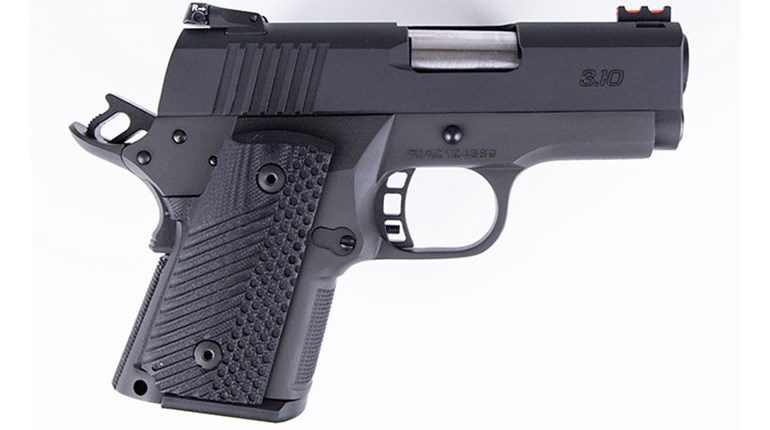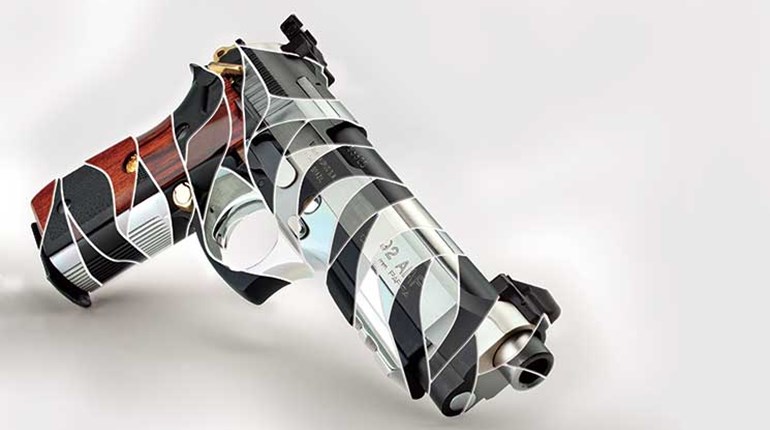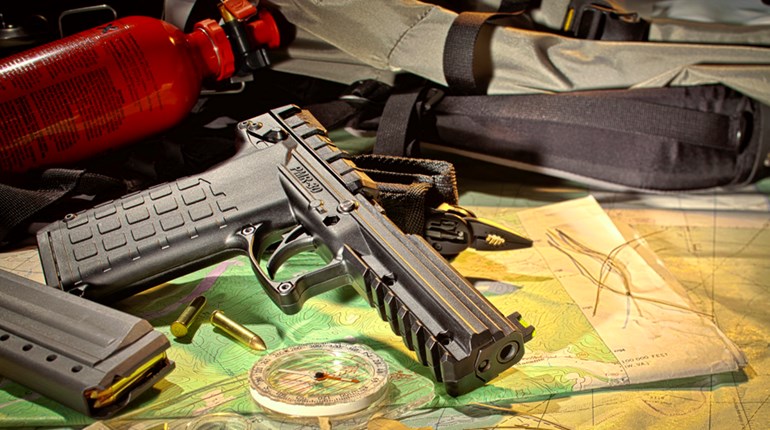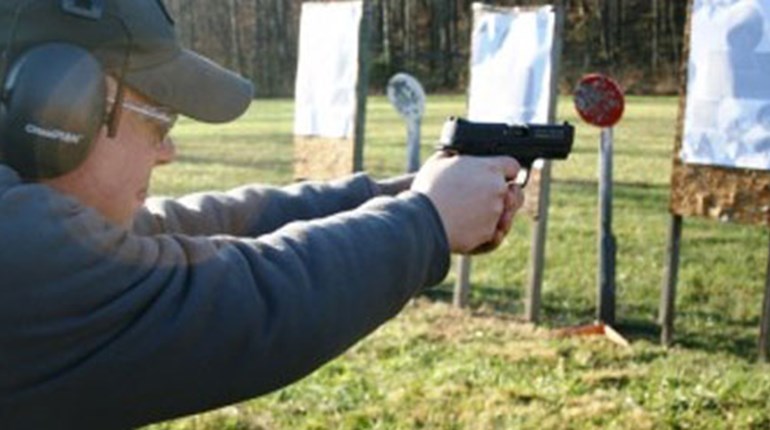
Para USA first began building handguns as Para Ordnance in Toronto, Canada, in 1988. Starting a handgun manufacturing company in Canada—especially eastern Canada—was a bit of surprise to many in the shooting world. The country's government was not known for its enthusiastic endorsement of privately owned firearms, particularly handguns. It also seemed almost insulting that the company's single firearm was a radical redesign of the revered Model 1911. Like others, I mentally dismissed the newcomer, firmly convinced the company wouldn't be around for long.
But strange things happened at Para in the ensuing years—specifically, the company not only manufactured some excellent 1911s, it also began making improvements on the original Browning design. First was the wide-body frame with higher-capacity magazines that almost doubled the amount of cartridges the original 1911 could hold—13 rounds in each mag instead of seven. This was followed by smaller 1911s that still carried 10 to 12 rounds of .45-caliber firepower. There were other good things that flowed from the factory in the semi-frozen North: things like match-grade, cone-shaped barrels, the power extractor, skeletonized spur hammers, better triggers and sights and perhaps most noteworthy, the Light Double Action (LDA) trigger.
Some of these changes were not welcomed by everyone. Those with small hands tended to prefer narrower frames with a shorter trigger reach. LDAs had a noticeably different feel for trigger reset. Others deemed match barrels unnecessary on a fighting handgun, and those who had never experienced a feed or extraction problem saw no reason for a larger, stronger extractor. But all of these improvements addressed what many shooters felt were real issues, and the changes were incorporated beautifully into the basic Model 1911 design and backed up by the company's lifetime service policy. Para thrived, and I apologized for my original negative thoughts by praising several of its excellent handguns in written reviews.
A while back, Para announced it was moving its factory to the Charlotte area of North Carolina and officially changing its name to Para USA. I didn't party wildly through the night at hearing the news, but I did share a toast and clink glasses with a couple of friends. During a recent visit with owner Thanos Polyzos, I asked why he had chosen Charlotte. "We wanted a community that was more a part of the gun culture," he said. "Charlotte has an excellent base of skilled labor with a high percentage of NRA members. It's a perfect match!"
And since this year's NRA Annual Meetings & Exhibits were held in Charlotte, several editors and writers in attendance were given a tour of the new facility by COO Mike Huxhold. The American factory's size is less than half the original one in Toronto—about 30,000 square feet versus 72,000 square feet north of the border. At the time of our tour in mid-May, Huxhold advised there were approximately 1,000 guns on the floor at any one time. By the end of 2010, he estimates the production rate will be about 4,000 guns per month. With the service center having moved from Tennessee to the new factory, all manufacturing and maintenance functions are now centralized in North Carolina.
There was a mixture of various machines on the factory floor at the time of our tour. As a guy who failed a semester of junior high shop, I'm not the leading expert at identifying all the equipment on display, but there were a number of state-of-the-art CAD/CAM machines already up and running, along with several being readied for the production line.
Para builds all kinds of molds and dies used in manufacturing its handguns. With the exception of frames, Para builds every part of its 1911s—including its own magazines—in the Charlotte area. Coming from a state allowing only restricted-capacity magazines, I drooled at all the wide-body mags we saw during the tour and lusted after the various 1911s in production.
The Charlotte facility has actually been turning out guns for the past year or so, but most of the frames used to build those guns came from Canada. Since it is the frame that carries the gun's serial number and is the BATFE-regulated component, the initial guns from North Carolina had to be stamped "Made in Canada." From now on, guns made in North Carolina will use frames built entirely in the U.S. for the new factory and will likewise be stamped with the proper factory location.
There are a couple new 1911s coming from Para soon that have some us old slabside fans agog. One of the new models is called "The Wild Bunch," and it is an excellent marketing move on Para's part to gain a foothold in the cowboy action shooting market.
The name comes from the Sam Peckinpah cult classic "The Wild Bunch," where William Holden and a bunch of tough old gunslingers left over from the old west shoot up the Southwest and northern Mexico in the early 20th century. The movie featured (some say "starred") the Model 1911 in .45 ACP. While it's exciting just having a new/old 1911 back in production, Para's real goal was to offer an authentic pistol for cowboy action fans to use in a new and separate category of cowboy shooting competition. The plan is to recreate the original without any of the improvements 1911 nuts have come to appreciate over the past century. So old guys with failing vision will be unable to see the sights, guys with fat hands will be cut by the slide, we can all cuss the absence of ultra-smooth aftermarket triggers, we can all fumble our reloads due to the absence of magazine bumper pads and so on. In return, we get to play early 20th century cowboy with yet another gun. Does this sound great or what!
Para's other new offering is called the "Classic 1911," and it's not so much new as it is an evolution of the GI model. That means you can expect certain improvements sure to make it much more pleasurable and productive to shoot. I'm thinking it will be somewhere between a Wild Bunch and GI Expert in terms of frills and accessories. I'm also thinking it may be a fine self-defense gun as delivered from the factory. Someone from Shooting Illustrated (hopefully me) will report back when the guns are released.
Back in the late 1980s, when Para first began making its wide-body 1911, many wondered why we needed another company making what was then almost an 80-year-old pistol. Over the next20 years, as more and more major manufacturers decided to build 1911s, we became even more puzzled. The first part of the answer is because the 1911 is an absolutely great pistol, judged by many to be the greatest fighting handgun of all time. The second part, the part that explains why Para has been so successful, is the company makes an excellent pistol and has come up with some extremely useful improvements to the original design.
Whether you personally like wide-bodies, LDAs, power extractors, etc., the fact is there's a place for all of these features in today's world of handguns—and shooters are buying them. Personally, I think it's entirely appropriate for 1911s to be built right here in America, and I welcome Para USA to its new home in Pineville, NC, just outside Charlotte. You may not have heard much about Pineville in the past, but I'm predicting you will hear plenty about it now.
Editor's Note: For AR-15 fans, Para-USA also builds an incredible version called the TTR.




































